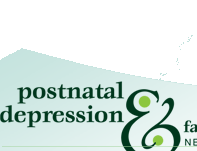 |

OLANZAPINE
This section is designed to inform professionals.
(Consumers, see Fact Sheet on Olanzapine)
Available as Zyprexa.
- Used in Schizophrenia and related Psychosis, acute manic episodes of bipolar disorder, prevention of recurrent manic, mixed, or depressive episodes in bipolar disorder.
- Also effective in treating depression with psychotic features.
- Has been used in obsessive- compulsive disorder, posttraumatic stress disorder, personality disorders.
- Mechanism of action of Olanzapine and other atypical antipsychotics is not well understood, but involves modulation of neurotransmitter activity in brain. Olanzapine binds to a broad range of neurotransmitter receptors, but it is believed that antagonism at central serotonin 5-HT2A and Dopamine D2 receptors is responsible for the therapeutic actions of Olanzapine.
Use in Pregnancy
Category B3
- Data are not sufficient to make definitive conclusions regarding the safety of Olanzapine therapy during pregnancy.
- The relative risks and benefits of Olanzapine treatment should be carefully weighed by the clinician and the patient on a case- by- case basis.
- Early experience on prospectively identified pregnancies exposed to Olanzapine found no increase risk of spontaneous abortion, stillbirth, prematurity, or any other major malformation in comparison to general population (1).
- Olanzapine should be used in pregnancy only if the potential benefit justifies the potential risk to the fetus (2).
Use in Lactation
Category L2
- In a study in lactating, healthy women, Olanzapine was excreted in breast milk. Mean infant exposure (mg/kg) at a steady state was estimated to be 1.8% of the maternal Olanzapine dose (mg/kg).
- The time at which Olanzapine concentration occurred in milk was slightly later in the dosing interval than the corresponding maximum concentration in the plasma.
- Mothers trying to minimize infant exposure may wish to avoid breastfeeding at peak milk concentration of the drug (i.e., 5 hours post dose).
- The data support the use of Olanzapine during breastfeeding with earlier studies indicated that Olanzapine might be considered relatively safe when mothers are breastfeeding healthy term infants. However, the breastfed infants must be monitored closely and the decision to breastfeed be made after individual risk-benefit analysis (3).
References
(1). David J. Goldstein, Lois A. Corbin (2000). Olanzapine – Exposed Pregnancies and Lactation: Early Experience. Journal of clinical psychopharmacology.
(2). Salvatore Gentile (2004). Clinical utilization of Atypical Antipsychotics in Pregnancy and Lactation. The Annals of pharmacotherapy: vol. 38, No. 7 pp. 1265-1271.
(3). Sharon J. Gardiner, Judith H. Kristensen, Debbie A. Wilson, Kenneth F. Ilett and Jonathan Rampono (2003). Transfer of Olanzapine into breast milk, calculation of infant drug dose and effect on breast-fed infants. The American Journal of Psychiatry: 160: 1428-1431.
|
 |





